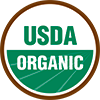Item Number: PV148
Organic Klondike Blue Watermelon
Extraordinary Sweetness, Triumphs in Taste Tests
Ideal for picnics and summer enjoyment, the Organic Klondike Blue Watermelon is a prized heirloom variety known for its extraordinary sweetness and vibrant red flesh. This blue watermelon features a striking green-striped rind and produces fruits that typically weigh 10–25 pounds and measure 10–16 inches long. Renowned since the early 1900s, the klondike watermelon consistently scores among the highest Brix (sugar) ratings in taste tests, making it a standout for gardeners seeking bold flavor and juicy texture.
Key Features
- Exceptional Flavor: The Organic Klondike Blue Watermelon offers a refreshing burst of sweetness with juicy, bright red flesh—perfect for fresh eating and summer gatherings.
- Heirloom Variety: Dating back over a century, this klondike watermelon is known for its resilience and ability to thrive in varied growing conditions.
- Size & Appearance: Produces large fruits weighing 10–25 lbs, with a green-striped rind and vibrant red interior that adds visual appeal to its rich taste.
- Authentic Blue Watermelon: The term “blue watermelon” refers to the variety name and rind color—not the flesh. While some myths claim blue or purple-fleshed watermelons exist, they are false. This heirloom variety is celebrated for its unique appearance and flavor, not unusual pigmentation.
Growing Tips
- Soil: Prefers well-draining, fertile soil with a pH of 6.0 to 7.0. Amend with compost or aged manure before planting.
- Planting: Sow seeds after the last frost. Space 2–3 feet apart in rows or hills spaced 4–6 feet apart to accommodate vining growth.
- Sun & Water: Requires full sun and 1–2 inches of water per week. Keep soil moist but not waterlogged. Use mulch to retain moisture and reduce weeds.
- Fertilization: Feed every 3–4 weeks with a balanced fertilizer or compost tea. Avoid excess nitrogen to prevent excess foliage at the expense of fruit.
- Support & Pruning: Vines can be trellised with slings to support fruit. Prune to improve airflow and sunlight exposure for healthier plants and higher yields.
- Pest & Disease Management: Monitor for aphids, cucumber beetles, powdery mildew, and anthracnose. Use crop rotation, row covers, and organic treatments as needed.
Harvesting
The klondike watermelon typically matures in 80–90 days. Harvest when:
- The rind turns dull (not glossy)
- It sounds hollow when tapped
- The tendril nearest the stem turns brown and dries out
Cut with a sharp knife or pruning shears, leaving a few inches of stem attached.
Why Choose Our Organic Klondike Blue Watermelon?
When you choose our Organic Klondike Blue Watermelon, you're getting a sustainably grown, true heirloom variety that offers authentic sweetness and bold red flesh. Unlike internet myths about blue or purple watermelon flesh (which do not exist), this blue watermelon delivers the genuine taste and texture that make it a summer favorite. Perfect for gardens and backyard growers, it’s available for purchase online—order your seeds today and enjoy a bountiful harvest all season long.
Explore more watermelon seeds for sale to find the perfect variety for your garden.




Check Your Zone Compatibility:
Compatible with your zone.
Growing Zone for

Our Guarantee To You
Since 1976, we've served our customers at every stage of growing. Please contact us at any time. We are happy to support and assist you.
Shipping Information
Shipping Information
Cannot ship to the following states: AK, HI, PR, VI, GU
Shipping Weight: 0.5 lb
Features
Features
- Heirloom
- Open-Pollinated
Characteristics
Characteristics
Planting & Care
Planting & Care
Soil & Water: Watermelon prefers light, loamy, fertile, deep, well-draining soil with a pH of 6.0-7.0. Add plenty of organic matter. Water plants amply until setting out, then water more sparingly. Mulch to prevent weed competition.
Planting & Growing: Plant starts in late spring or early summer, once the soil has warmed up to at least 70°F (21°C). Space plants 2 to 3 feet apart in rows spaced 4 to 6 feet apart to allow for adequate air circulation and room for vine growth. Watermelons are large vining plants that can take over an extensive garden space. They can be trellised, but use slings to support the developing fruit.
Harvesting & Storage: Harvest melons when the tendril closest to the stem turns dry and brown and the stem becomes brittle. Eat fresh, freeze flesh in a honey-based syrup, or pickle the rind.
Useful Information
Useful Information
Guarantee
Guarantee
We guarantee the perishable items we sell to be in good, viable condition when we sell them. Perishable items include, but are not limited to, garlic bulbs, flower bulbs, seed potatoes, onion sets & transplants, potted or bare root trees, vegetable crowns, etc. If your perishable item arrives in substandard condition, take photographs and please contact us within 3 days of the purchase date (or delivery date) and we will provide you with a refund of the purchase price (excluding shipping costs), or a replacement. Accordingly, we urge you to open any boxes marked as ""Perishable"" immediately upon receiving them and inspect the shipment thoroughly (do not crack open heads of garlic, we do not accept claims on cracked garlic). Because some perishable items can deteriorate very quickly, we cannot accept any claims beyond the 3-day time frame as it becomes too difficult to determine if these items were delivered in substandard condition, or if they turned into such substandard condition because of having been improperly cared for or stored once delivered.
Share



